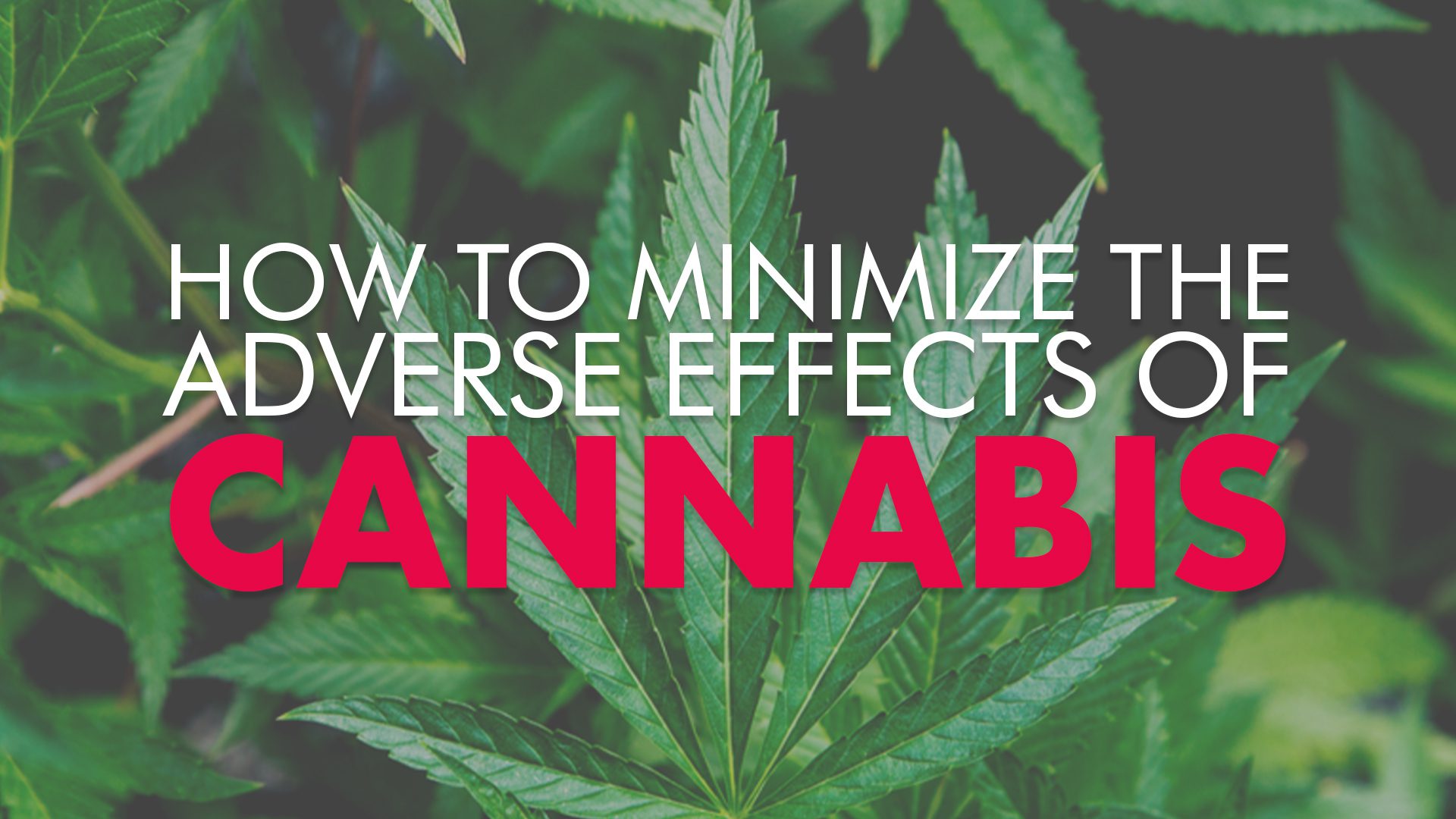Many patients have questions about what to expect when they use cannabis for the first time. Some are fearful of becoming too high, and this makes them anxious to try their new medicine. Those of you who have already experienced the many benefits of cannabis may think this is a silly fear, but you’d be surprised how many people share this concern. Here are a few things you can do to reduce the possible adverse effects of cannabis … if you ever find yourself in a rough situation.
Finding Your Optimal Dosage
Finding your optimal dosage is the most important factor in minimizing side effects, followed by using the appropriate delivery method and cannabis strain or preparation.
Hydration
One of the most common causes of cannabis’s negative side effects is dehydration. Simply increasing your water intake is often the least expensive and most effective way to improve your health and mitigate these effects. While there is no set amount of water that’s appropriate for everyone, most people do well with 2-4 liters daily (68-135 ounces). To find the right amount for you, pay attention to your thirst, which many people confuse with hunger. Also pay attention to your urine – in the absence of caffeine, alcohol, or vitamins that darken urine (e.g. riboflavin), your urine will be clear when you’re well hydrated. Count any caffeine-containing or alcoholic beverages as “anti-water,” because they cause your body to excrete water even if it needs more.
Mindset and Setting
The most common negative effects of cannabis are related to the interface between a person’s state of consciousness and their surrounding environment. Adverse effects can often be prevented by paying attention to your mindset and surroundings before using cannabis. First of all, if you’ve experienced anxiety, panic, paranoia, or confusion after taking cannabis, or if you’re relatively new to it altogether, it is strongly recommend only using it in a setting that is familiar and comfortable to you. Research has shown that stressful environments are more likely to cause adverse effects in cannabis users. While cannabis can help patients “turn the page” on stuck emotions and limiting thought patterns, it can also amplify these uncomfortable states. Patients often will not know which outcome to expect, and the intensification of uncomfortable emotions or thoughts can be distressing.
Prior to administering cannabis, take 1-5 minutes to observe and evaluate your current inner state. While this may not sound like a long time, it will probably feel like a long time. Make a ritual out of your cannabis use: direct your thoughts toward what you hope to gain from this experience. Taking time for pre-cannabis introspection will empower you to participate in your response to cannabis, and increase the likelihood of “turning the page” if that is what’s needed.
Furthermore, cannabis can stimulate neuroplasticity, the process of making new neural connections that’s involved in learning, and the sometimes-unconscious adoption of new thought and behavioral patterns. Self-awareness and setting positive intentions will help you make the most of your cannabis-enhanced neuroplasticity, so that you can improve the way you think and feel long after the cannabis wears off.
Conscious Reception of Food
Patients who have trouble with increased appetite after using cannabis are encouraged to take cannabis after meals rather than on an empty stomach. Keep healthy snacks available, and use the enhanced sensory experience of cannabis to savor your food. Chew every bite thoroughly and pay close attention to the taste and the texture, as if you were a food connoisseur.
Cardiovascular Side Effects
If you experience lightheadedness after standing, or racing or irregular heartbeats, it is strongly recommended using a delivery method with slower onset, such as tincture. Be careful not to take too much cannabis, and remember to stay well hydrated.
Adjunctive Herbs
Often herbs or supplements can be used in combination with cannabis to enhance each other’s benefits and reduce side effects. Acorus calamus root, also known as “Sweet Flag” or simply “Calamus”, has long been used in Asian, European, and Native American medicine for a variety of gastrointestinal, infectious, and other conditions. When combined with cannabis, calamus root can prevent dry mouth, scattered thinking, and anxiety. It may also be helpful in minimizing THC’s psychoactive effects. The powdered root can either be mixed with cannabis flowers and smoked, or a small piece of the root can be slowly sucked, chewed, or left in the space between the gums and the cheek. In high enough doses, it has been reported to create its own mild visionary or hallucinogenic properties. Herbalists often recommend the American variety of acorus calamus over the Indian or Asian varieties for better safety and efficacy.
For patients who complain of fatigue from regular cannabis use, it is sometimes recommended to take adaptogenic herbs that can increase energy levels and improve resilience to stress. Holy Basil (also known as Tulsi) and Eleuthero (also known as Siberian Ginseng) are two popular choices. For cannabis-associated anxiety, beyond selecting the right dosage, strain, and delivery method, sometimes adding Lemon Balm or 5-HTP is recommended.
Learn More
Green Health Docs provides guidance on the use of medical cannabis to treat many different ailments and conditions. We also broadcast our educational sessions on YouTube and Facebook. For more information or to learn how to become a legal medical cannabis patient, call us at 1-877-242-0362. You can also now book appointments online, or you can be evaluated through telemedicine. Find a Medical Marijuana Doctor!






Leave a Reply